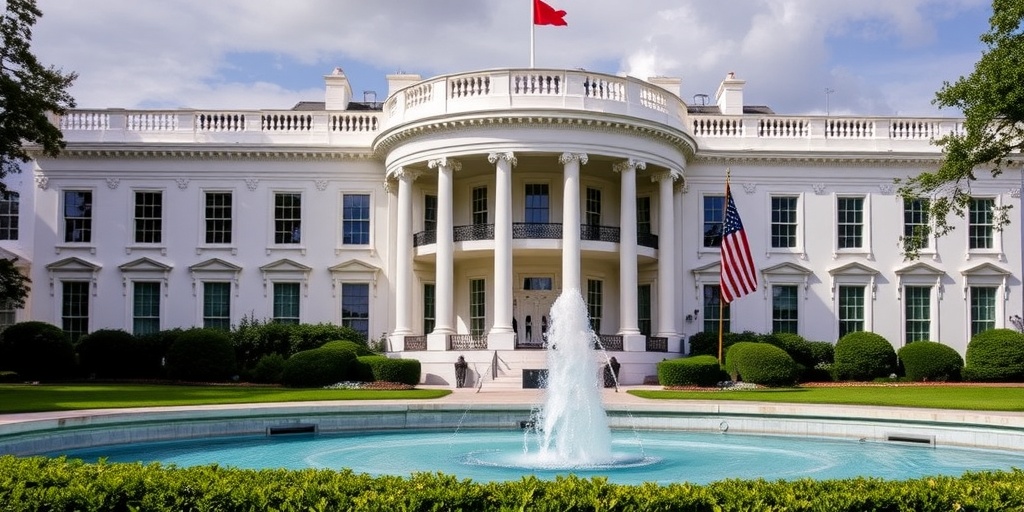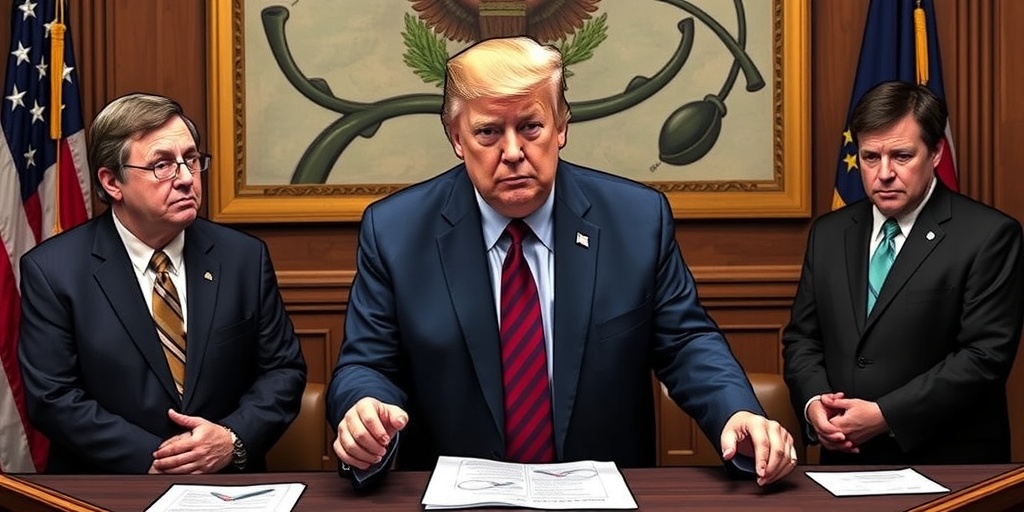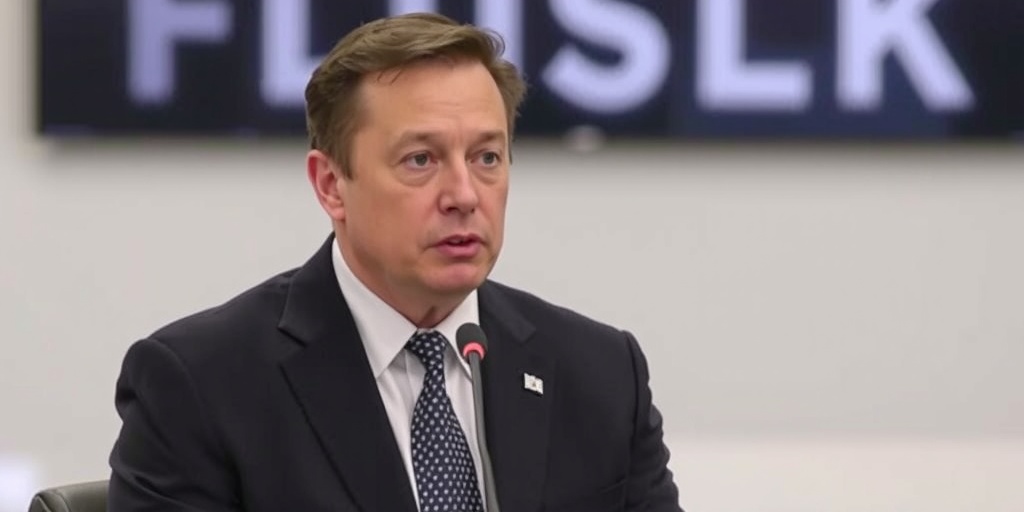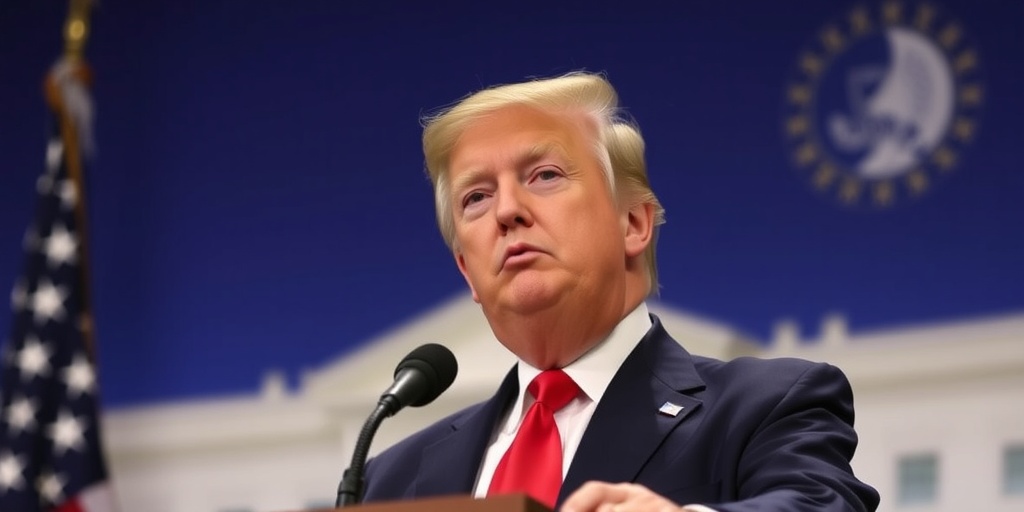Now Reading: White House Selects Pool Reporters for Trump Coverage
-
01
White House Selects Pool Reporters for Trump Coverage
White House Selects Pool Reporters for Trump Coverage

Title: Trump Administration Alters Presidential Pool Access for Media Outlets
In a notable shift from longstanding tradition, the Trump administration announced on Tuesday that it would assume control over the selection of media outlets allowed to participate in the presidential press pool. This move, disclosed by White House Press Secretary Karoline Leavitt, breaks with decades of precedent, wherein the White House Correspondents’ Association (WHCA) was responsible for determining which journalists covered the presidential activities and briefings.
The presidential pool is an essential mechanism that has been used to ensure transparency and accountability in presidential communications. Due to the intimate settings of several presidential events—often held in spaces like the Oval Office—it is impractical for all reporters covering the White House to attend. Instead, a small, rotating group of journalists relays the president’s comments and actions to the broader media landscape. These reporters compile “pool reports” that disseminate information to hundreds of news organizations that monitor the president’s daily activities.
Traditionally, the pool often consisted of journalists from prominent organizations such as CNN, Reuters, The Associated Press, ABC News, Fox News, and The New York Times. This diversification of voices in presidential reporting has been perceived as vital to fostering a robust democratic discourse. However, Leavitt’s announcement reveals a strategic move by the Trump administration to possibly reshape the landscape of media access to the presidency.
Leavitt articulated that the newly implemented policy aims to incorporate “new media” outlets, including digital platforms, streaming services, and podcasts, into the presidential pool. Her intention, as she stated, is to allow these platforms to “share in this awesome responsibility” of covering the president. This initiative has stirred up considerable debate within the journalistic community, prompting a vigorous response from the WHCA.
In a strong condemnation of the policy shift, WHCA President Eugene Daniels issued a statement characterizing the decision as detrimental to the independence of the free press in the United States. “This move tears at the independence of a free press in the United States,” he remarked, emphasizing that such a policy risks the government exerting undue influence over which journalists are permitted to cover the president. Daniels underscored the fundamental tenet that in a democratic society, leaders should never dictate who comprises the press corps.
Significantly, the WHCA expressed its discontent with the Trump administration’s unilateral decision-making process, highlighting that no prior discussions took place regarding the announcement. “The W.H.C.A. will never stop advocating for comprehensive access, full transparency and the right of the American public to read, listen to, and watch reports from the White House, delivered without fear or favor,” Daniels asserted.
The Trump administration has recently introduced a “new media” seat within the White House briefing room, which has been filled by journalists from various backgrounds. While some of these reporters, such as those from Axios and Semafor, have built reputations for accuracy and fairness, others, including podcast host Sage Steele, have drawn criticism for displaying partisan sympathies toward the administration. This blending of traditional and new media voices may provoke further scrutiny concerning the dynamics of press freedom and neutrality.
In Tuesday’s briefing, Leavitt reassured the press that legacy media outlets—with their established presence in the pool—would maintain their participation while also embracing the inclusion of new voices. Nonetheless, specifics regarding the operational aspects of this new plan remain unclear. Within this framework, President Trump and his aides would gain enhanced authority to handpick which media figures and outlets could attend presidential events, ask questions, and observe the president during crucial activities.
Leavitt attempted to frame the policy shift as a restoration of power back to the American people, suggesting that by controlling the composition of the daily press pool, the White House would enhance public engagement and representation in presidential coverage. However, critics argue that allowing the government to select its own media representatives undermines the traditional watchdog role of the press, designed to balance power and ensure accountability in government.
The implications of this policy change are substantial as they introduce a new variable into the already complex relationship between the White House and the media. The future of how presidential communications will be reported and the level of access afforded to journalists remains uncertain in the wake of this decision, raising critical questions about the nature of press freedom in an ever-evolving media landscape. As the Trump administration moves forward with its revised approach, the WHCA and other press advocates must navigate these changes while advocating for the core principles of democracy and transparent governance.
Stay Informed With the Latest & Most Important News
Previous Post
Next Post
-
 01New technology breakthrough has everyone talking right now
01New technology breakthrough has everyone talking right now -
 02Unbelievable life hack everyone needs to try today
02Unbelievable life hack everyone needs to try today -
 03Fascinating discovery found buried deep beneath the ocean
03Fascinating discovery found buried deep beneath the ocean -
 04Man invents genius device that solves everyday problems
04Man invents genius device that solves everyday problems -
 05Shocking discovery that changes what we know forever
05Shocking discovery that changes what we know forever -
 06Internet goes wild over celebrity’s unexpected fashion choice
06Internet goes wild over celebrity’s unexpected fashion choice -
 07Rare animal sighting stuns scientists and wildlife lovers
07Rare animal sighting stuns scientists and wildlife lovers




















